Hillyard Company, an office supplies specialty store, prepares its master budget on a quarterly basis. The following
Question:
Hillyard Company, an office supplies specialty store, prepares its master budget on a quarterly basis. The following data have been assembled to assist in preparing the master budget for the first quarter:
(a) As of December 31 (the end of the prior quarter), the company’s general ledger showed the following account balances:
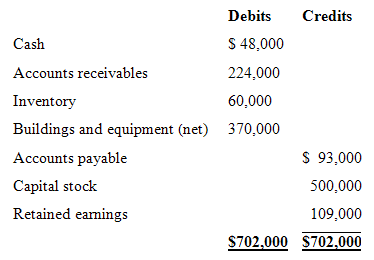
(b) Actual sales for December and budgeted sales for the next four months are as follows:
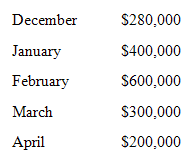
(c) Sales are 20% for cash and 80% on credit. All payments on credit sales are collected in the month following sale. The accounts receivable at December 31 are a result of December credit sales.
(d) The company’s gross margin is 40% of sales. (In other words, cost of goods sold is 60% of sales.)
(e) Monthly expenses are budgeted as follows: salaries and wages, $27,000 per month: advertising, $70,000 per month; shipping, 5% of sales; other expenses, 3% of sales. Depreciation, including depreciation on new assets acquired during the quarter, will be $42,000 for the quarter.
(f) Each month’s ending inventory should equal 25% of the following month’s cost of goods sold.
(g) One-half of a month’s inventory purchases is paid for in the month of purchase; the other half is paid in the following month.
(h) During February, the company will purchase a new copy machine for $1,700 cash. During March, other equipment will be purchased for cash at a cost of $84,500.
(i) During January, the company will declare and pay $45,000 in cash dividends.
(j) Management wants to maintain a minimum cash balance of $30,000. The company has an agreement with a local bank that allows the company to borrow in increments of $1,000 at the beginning of each month. The interest rate on these loans is 1 % per month and for simplicity we will assume that interest is not compounded. The company would, as far as it is able, repay the loan plus accumulated interest at the end of the quarter.
Required:
Using the data above, complete the following statements and schedules for the first quarter:
1. Schedule of expected cash collections:

2. (a) Merchandise purchases budget:
`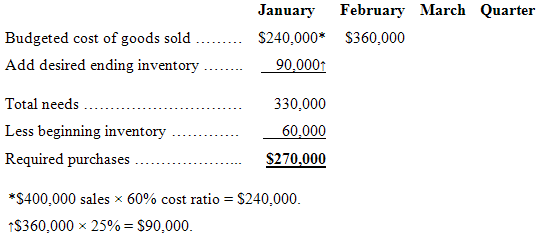
(b) Schedule of expected cash disbursements for merchandise purchases:
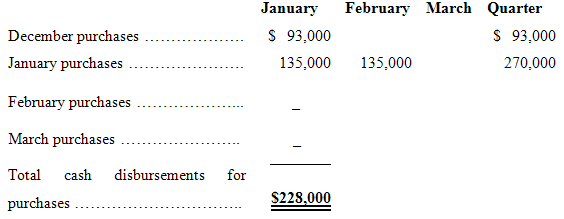
3. Schedule of expected cash disbursements for selling and administrative expenses:
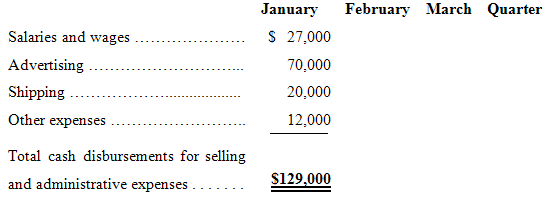
4. Cash budget:
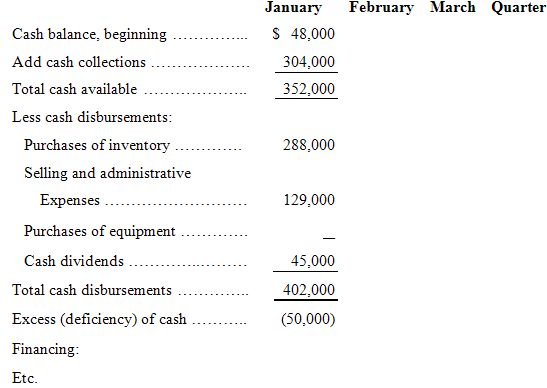
5. Prepare an absorption costing income statement for the quarter ending March 31 as shown in Schedule 9 in the chapter.
6. Prepare a balance sheet as of March 31.
Ending InventoryThe ending inventory is the amount of inventory that a business is required to present on its balance sheet. It can be calculated using the ending inventory formula Ending Inventory Formula =... Balance Sheet
Balance sheet is a statement of the financial position of a business that list all the assets, liabilities, and owner’s equity and shareholder’s equity at a particular point of time. A balance sheet is also called as a “statement of financial...
Step by Step Answer:

Managerial Accounting
ISBN: 978-0697789938
13th Edition
Authors: Ray H. Garrison, Eric W. Noreen, Peter C. Brewer





